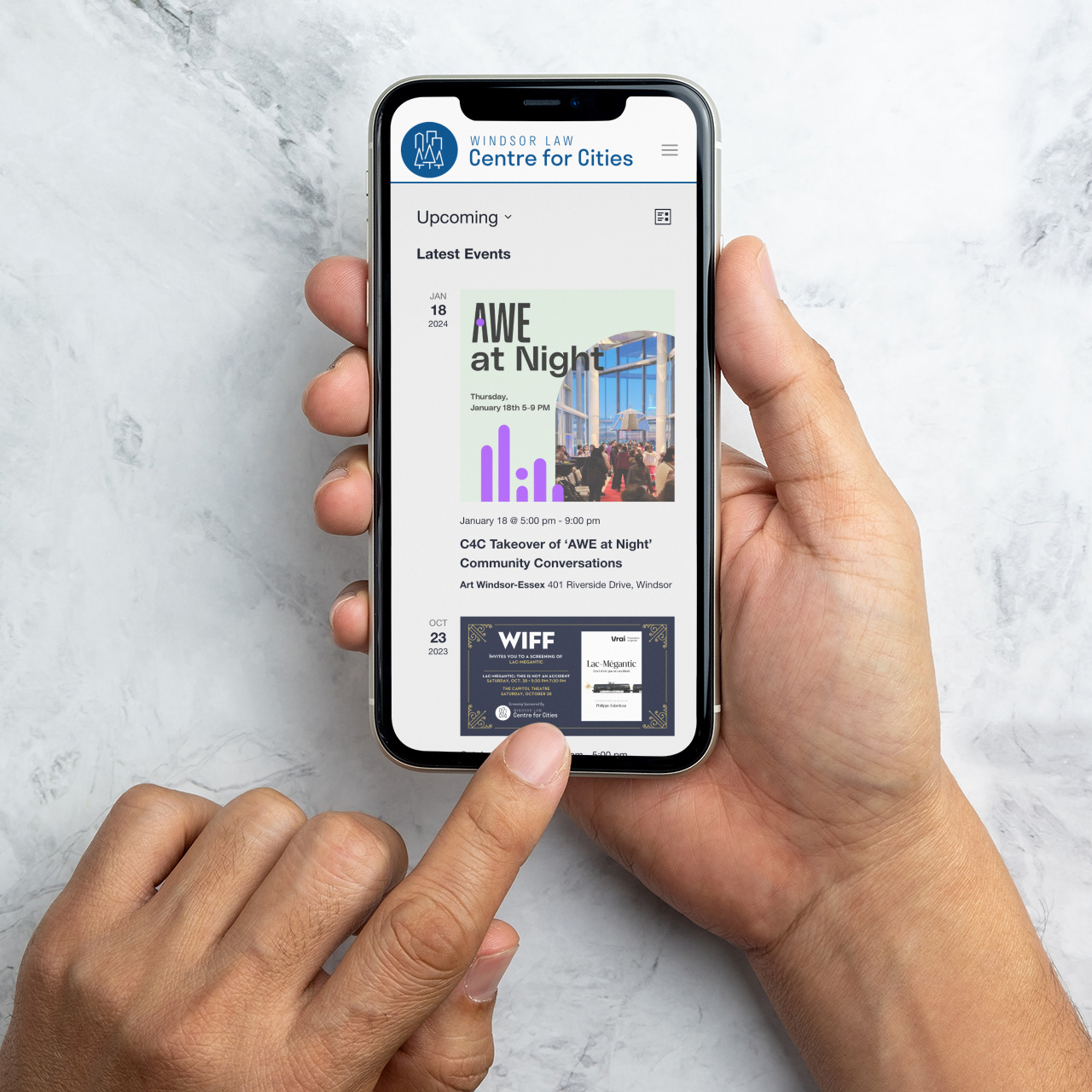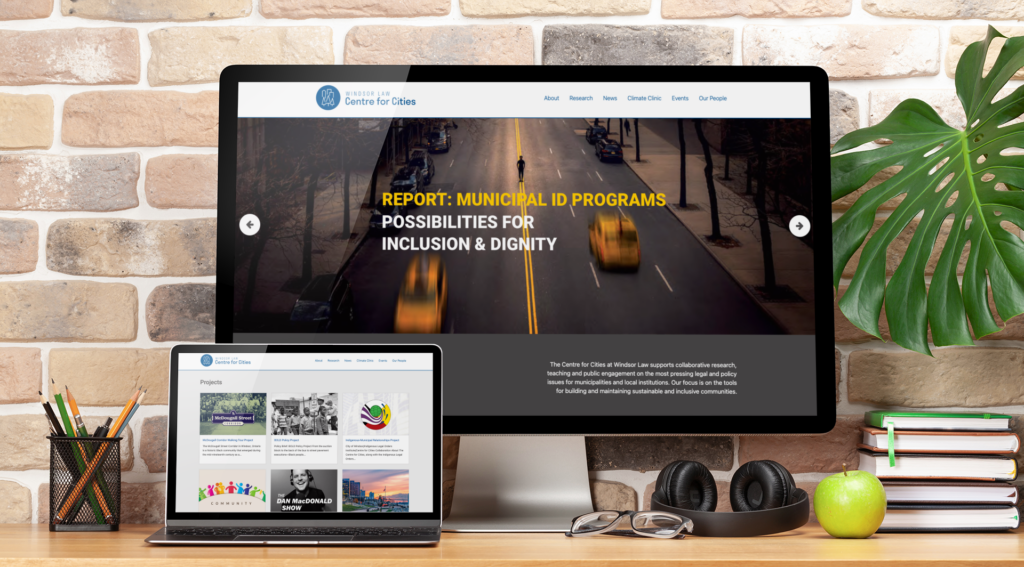About Centre for Cities (C4C)
Established in 2019, the Centre for Cities at Windsor Law champions the interplay of research, education, and community involvement with a focus on the myriad of legal and policy instruments that shape municipalities and the ethos of effective urban development. As urban areas increasingly stand at the forefront of critical debates on a spectrum of issues from climate action and sustainable living to housing, public engagement, land regulation, city governance, sanctuary initiatives, digital privacy, equitable transportation, and reconciliation efforts with Indigenous populations, the Centre emerges as an impartial platform. It encourages a synergetic dialogue among scholars, students, local governments, community groups, and activists, aiming to foster sustainable and inclusive urban environments.
Branding
We started by creating a brand identity that conveys a sense of authority, expertise, and the centre’s focus on urban issues, in a way that is professional and easily recognizable. The logo embodies the principles of sustainable and inclusive urban development, and the accompanying icon merges elements of the city and nature within a circular motif, signifying unity and democratic values.




Website
The Windsor Law Centre for Cities website was designed to highlight its focus on collaborative research, teaching, and public engagement with a strong emphasis on legal and policy issues relevant to municipalities and local institutions. It categorizes content into intuitive sections for effortless navigation. Visual elements and recent blog posts are prominently displayed to engage visitors with current activities and research initiatives. The design approach supports the Centre’s mission by facilitating access to information and resources. Key features of the website include a blog and an events calendar.



